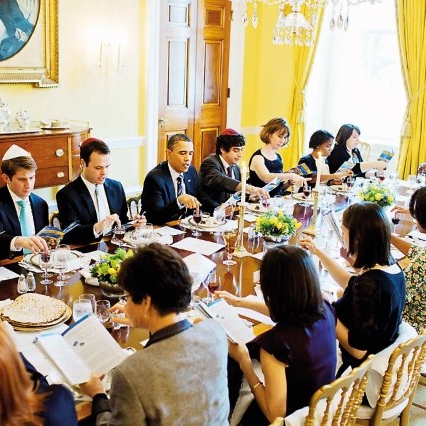click to dowload our latest edition
CLICK HERE TO SUBSCRIBE TO OUR NEWSLETTER


Published
5 years agoon
By
adminHOWARD SACKSTEIN
In 1985, Jews for Social Justice (JSJ), the South African Jewish anti-apartheid movement, decided that the story of Passover, the historical exodus from slavery to freedom, held a universal message for all of those in the anti-apartheid struggle.
Determined to inspire hope and share the message of freedom with others, JSJ decided to host a series of Freedom Seders with the leadership of the anti-apartheid movement to celebrate the universal message of liberation.
I approached Chief Rabbi Cyril Harris with the idea, and he immediately committed himself to support and attend the seder. He also committed himself to designing a universal Haggadah that would not only share the story of Passover, but also Jewish teachings on freedom. The Haggadah would include universal writings on liberty from Martin Luther King, Mahatma Gandhi, and other icons of liberation.
Maxine Hart and I undertook to get as many activists involved in the proceedings. We invited, among others, the leadership of the United Democratic Front (the UDF was the internal wing of the ANC); the trade union movement, including Cosatu (Congress of South African Trade Unions); the End Conscription Campaign; the National Union of South African Students; the Five Freedoms Forum; the Detainees Parents Support Committee; the Black Sash; the Johannesburg Democratic Action Committee; the South African Council of Churches; and the National Educational Crisis Committee. The response from anti-apartheid activists was overwhelming.
As usual, the attempt to cajole the leadership of the South African Jewish community into attending was left to me. Their response was significantly more mooted than that of the political activists.
The participation of Chief Rabbi Harris, whom Nelson Mandela would later refer to as “my rabbi” and his activist lawyer wife, Ann Harris, gave some cover for some communal leaders to attend.
Logistics for the operation was handled by Judy Froman Cowan, whose parents Colin and Penny Froman were always willing to offer their home for JSJ functions. My father, Maurice Sackstein, made charoset and chrain for the event. My mother, Helen, offered her kneidlach recipe, because no activist should ever have to suffer through someone else’s underwhelming kneidlach.
And so, each year for a number of years, we gathered at the Froman home, and shared Jewish lessons on freedom with those who risked their lives, every day, for the liberation of South Africa.
Among those who attended were the Reverend Beyers Naudé (Oom Bey as he was affectionately known), the Afrikaans cleric and theologian who was one of the few Afrikaners willing to stand up to the National Party; Popo Molefe the United Democratic Movement activist who later became premier of the North West Province; and current Transnet Chairman Mosiuoa (“Terror”) Lekota, the former premier of the Free State and the current leader of COPE (the Congress of the People). It also included the Reverend Frank Chikane, who became director general of the Presidency under President Thabo Mbeki; and UDF activist Murphy Morobe, who later headed South Africa’s financial and fiscal commission.
JSJ Chairperson Franz Auerbach, who had grown up in Nazi Germany, spoke of his family’s escape to freedom from Hitler. JSJ executive Ursula Bruce spoke passionately about her son, David Bruce’s, imprisonment for refusing to be conscripted into the apartheid army.
Chief Rabbi Harris skilfully steered the evening’s discussion on the meaning and importance of freedom. Freedom was a process, he explained, and that is why the Jews wandered in the desert for 40 years. It was important that those with memories of slavery could pass on, and that only free people – those born in freedom unburdened by generations of oppression – could enter the land of Israel.
For years, the JSJ Freedom Seders would be among the most sought after events for those in the anti-apartheid community.
Politically orientated Passover seders are not unique, however. The President of the United States, Bill Clinton introduced a Pesach seder in the White House in 1993.
President Barak Obama started the tradition of seders while on his first election campaign in 2008 by celebrating in the basement of the Sheraton Hotel in Harrisburg, Pennsylvania.
Once in office, Obama would host the annual gathering held in the White House residence’s Old Family Dining Room. Attendance by Obama’s daughters, Malia and Sasha, was compulsory, and the first children searched for the afikomen (a piece of matzah hidden during the seder) through the halls of the White House. Nobel Laureate Elie Wiesel even wrote a specific piece of the Haggadah to be recited at the Obama seder.
Jared Kushner and Ivanka Trump have continued the tradition of Passover seders for White House staff, although President Donald Trump is yet to attend.
The South African Jewish community needs to realise it still has so much to share on the lessons of freedom, and the rest of the country needs to understand it still has so much to learn.
